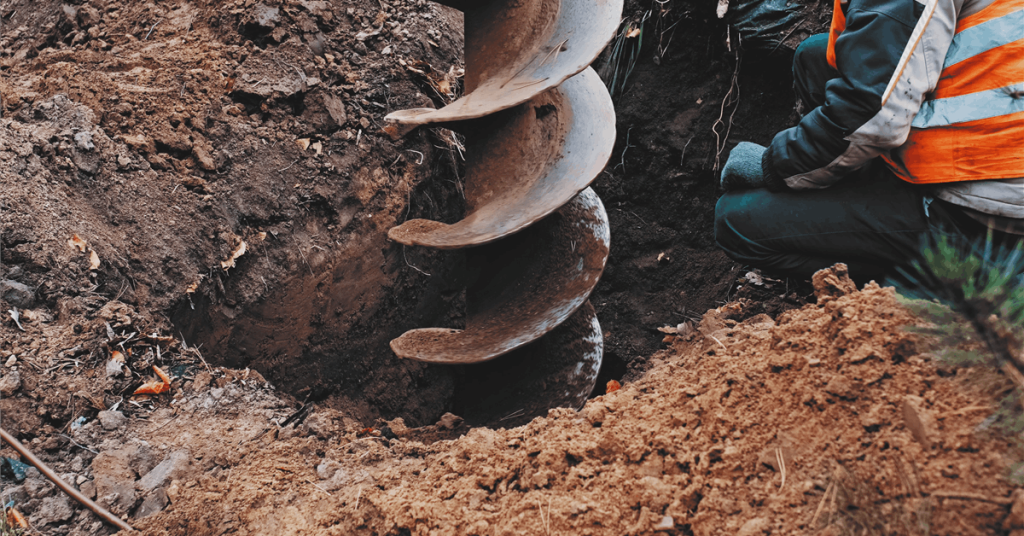A nuclear technology startup raised $33 million in a private placement to test its system for storing radioactive waste deep underground.
Deep Isolation Nuclear Inc. uses drilling techniques developed for fracking by the oil and natural gas industry to dig boreholes where it can deposit spent nuclear fuel rods. The Berkeley, California-based company says its technology is nearly ready for use, though it has yet to fully test the system and still needs regulatory approval.
Interest in nuclear power is skyrocketing as the world’s electricity needs increase, particularly to power artificial intelligence. While the technology doesn’t emit carbon dioxide, disposing of the deadly waste it creates remains a vexing challenge. Reactors typically rely on nearby, surface storage sites for old fuel, which isn’t a long-term solution and comes with national security and safety risks. Plans for a centralized, underground US repository stalled after years of local opposition, and Deep Isolation Chief Executive Officer Rod Baltzer said his approach offers a needed alternative.
“There’s been a recognition that boreholes could play a role in disposal,” he said in an interview. “The technology is there. It’s ready to be deployed.”
Existing investor NAC International, along with new backers including Segra Capital Management, participated in the private placement, according to a statement Thursday. Deep Isolation also completed a merger with Aspen-1 Acquisition Inc., a transaction that will let it become a publicly traded company. Baltzer said its shares will be available to trade in the coming months.
Deep Isolation has tested a small-scale version of its system, burying and then retrieving a three-foot cannister — it wasn’t filled with waste — about 670 meters (2,200 feet) below the surface. In commercial deployments, Baltzer said he expects to drill about 1 kilometer to 1.5 kilometers (0.6 miles to 0.9 miles) below the surface, then use directional drilling technology to extend the hole laterally about the same distance. The company plans to use the funding for a full-size test with cannisters that can hold a single spent fuel rod, about 5 meters long and 38 centimeters (15 inches) wide.
This method would be as much as 70% cheaper, on a per-ton basis, than using a large, centralized waste repository, said Baltzer. While Deep Isolation has no customers yet, he said Eastern European countries have expressed strong interest in the idea. He expects to attract users, likely outside the US, after the company completes the full-scale test, which it plans to conduct in early 2027.
With demand for nuclear power growing, addressing the waste will become a more pressing issue, said Steven Chu, former US energy secretary and an adviser to Deep Isolation, in an interview. “The disposal problem is a real problem, and it has to be solved.” Using deep boreholes is an idea that’s “gaining traction.”
To contact the author of this story:
Will Wade in New York at wwade4@bloomberg.net
Generated by readers, the comments included herein do not reflect the views and opinions of Rigzone. All comments are subject to editorial review. Off-topic, inappropriate or insulting comments will be removed.
element
var scriptTag = document.createElement(‘script’);
scriptTag.src = url;
scriptTag.async = true;
scriptTag.onload = implementationCode;
scriptTag.onreadystatechange = implementationCode;
location.appendChild(scriptTag);
};
var div = document.getElementById(‘rigzonelogo’);
div.innerHTML += ” +
‘‘ +
”;
var initJobSearch = function () {
//console.log(“call back”);
}
var addMetaPixel = function () {
if (-1 > -1 || -1 > -1) {
/*Meta Pixel Code*/
!function(f,b,e,v,n,t,s)
{if(f.fbq)return;n=f.fbq=function(){n.callMethod?
n.callMethod.apply(n,arguments):n.queue.push(arguments)};
if(!f._fbq)f._fbq=n;n.push=n;n.loaded=!0;n.version=’2.0′;
n.queue=[];t=b.createElement(e);t.async=!0;
t.src=v;s=b.getElementsByTagName(e)[0];
s.parentNode.insertBefore(t,s)}(window, document,’script’,
‘https://connect.facebook.net/en_US/fbevents.js’);
fbq(‘init’, ‘1517407191885185’);
fbq(‘track’, ‘PageView’);
/*End Meta Pixel Code*/
} else if (0 > -1 && 101 > -1)
{
/*Meta Pixel Code*/
!function(f,b,e,v,n,t,s)
{if(f.fbq)return;n=f.fbq=function(){n.callMethod?
n.callMethod.apply(n,arguments):n.queue.push(arguments)};
if(!f._fbq)f._fbq=n;n.push=n;n.loaded=!0;n.version=’2.0′;
n.queue=[];t=b.createElement(e);t.async=!0;
t.src=v;s=b.getElementsByTagName(e)[0];
s.parentNode.insertBefore(t,s)}(window, document,’script’,
‘https://connect.facebook.net/en_US/fbevents.js’);
fbq(‘init’, ‘1517407191885185’);
fbq(‘track’, ‘PageView’);
/*End Meta Pixel Code*/
}
}
// function gtmFunctionForLayout()
// {
//loadJS(“https://www.googletagmanager.com/gtag/js?id=G-K6ZDLWV6VX”, initJobSearch, document.body);
//}
// window.onload = (e => {
// setTimeout(
// function () {
// document.addEventListener(“DOMContentLoaded”, function () {
// // Select all anchor elements with class ‘ui-tabs-anchor’
// const anchors = document.querySelectorAll(‘a .ui-tabs-anchor’);
// // Loop through each anchor and remove the role attribute if it is set to “presentation”
// anchors.forEach(anchor => {
// if (anchor.getAttribute(‘role’) === ‘presentation’) {
// anchor.removeAttribute(‘role’);
// }
// });
// });
// }
// , 200);
//});

